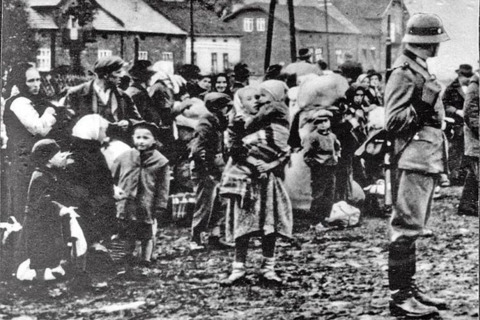The ethnic cleansing and deportations started on the night of November 27, 1942, and lasted until March the following year. It is estimated that by that time around 110,000 Poles had been displaced from the Zamość region. Some of the locals were murdered on the spot, other transported to the camps where Nazis made selections according to people’s “racial value”. There were several categories: people with some “German blood” were moved to Łódź, others were deemed suitable to be exploited as forced labourers of the Reich, while those “of no use” (mostly old people and children) were sent to death camps for extermination.
Many of the 30,000 children starved or froze to death in Holocaust trains; others were experimented on or gassed in death camps. Children with “Aryan features” were selected by a panel of German doctors as suitable for Germanization – they got a wooden plaque hung around their necks bearing the symbol KI, or Kinderaktion, and a number. The youngest ones were the most valuable ones because they could be taken away by German families straight away, while the older ones had to be taught German and their previous lives had to be “erased from their memories” first. It was only then that the older Polish children would get their new, changed names and false birth certificates. Due to that, it was difficult to determine later on how many Zamość children ended up being “Germanized”. Of an estimated 5,000 children, only around 800 of them were located and sent back to Poland after the war.
